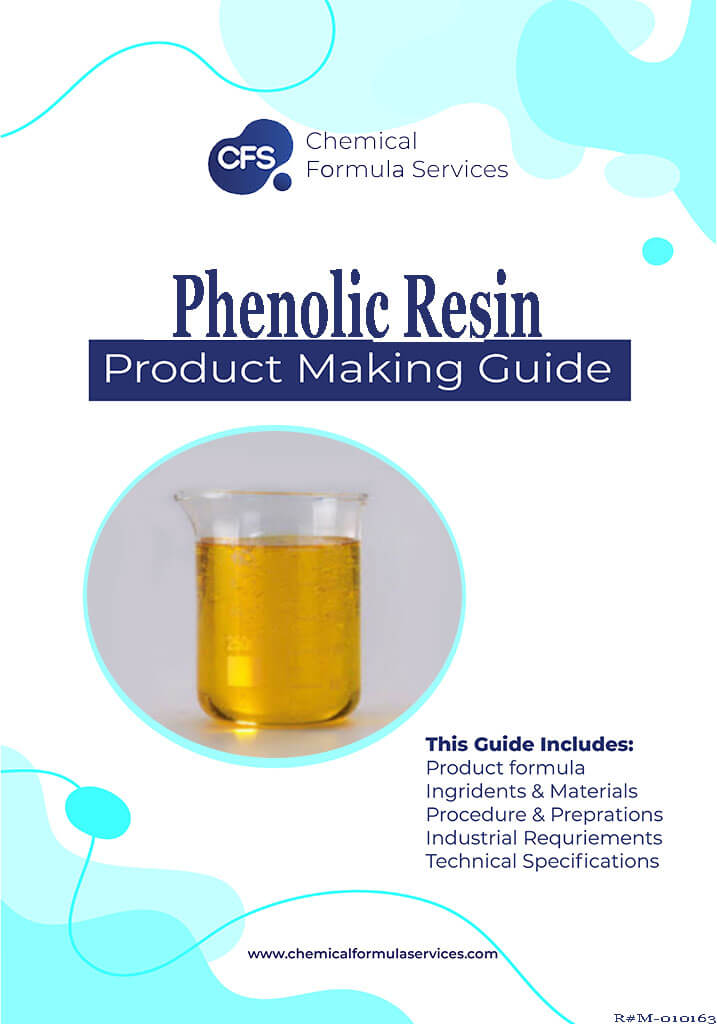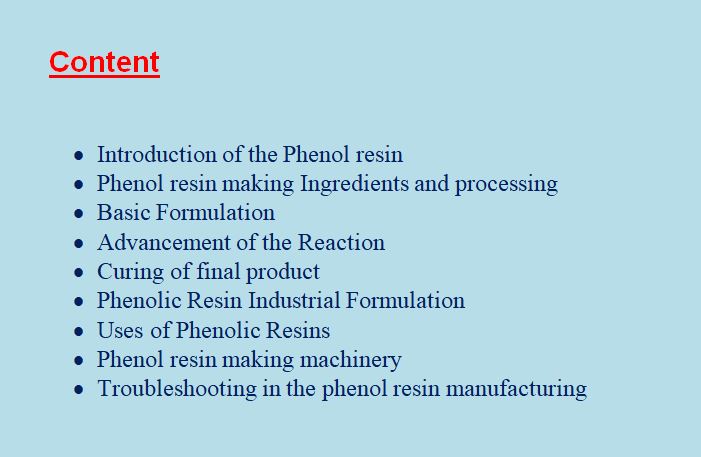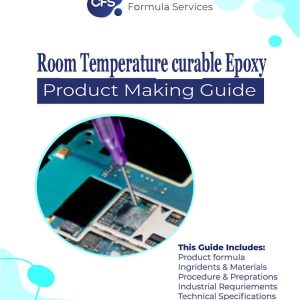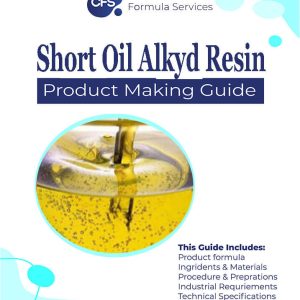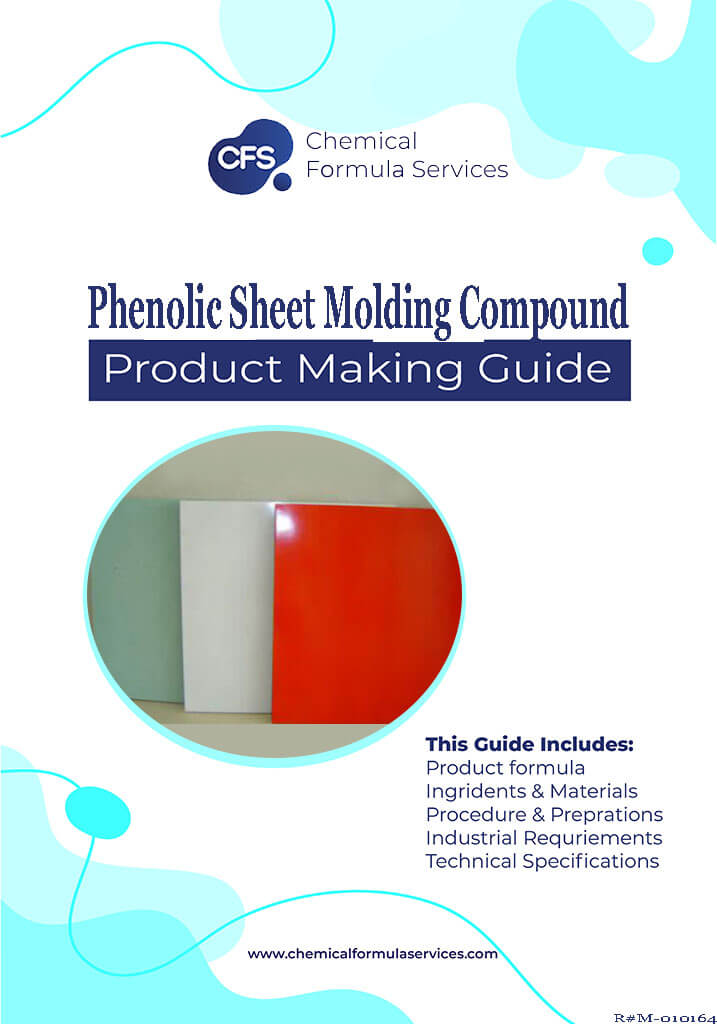How to Make Phenolic Resin
$ 75
Description
The manufacturing process of phenolic resin involves the reaction of phenol with formaldehyde under controlled conditions. Phenol resin has synthetic polymers known for their excellent heat resistance, mechanical properties, and electrical insulation properties.
phenolic resin making process:
- Raw Material Preparation: The primary raw materials for phenolic resin production are phenol and formaldehyde. Phenol derives from crude oil or coal tar, while formaldehyde is typically obtain through the oxidation of methanol. Both phenol and formaldehyde are commonly available commercial chemicals.
- Precondensation: The process starts by combining phenol and formaldehyde in a reactor. Then mixture heats and undergoes precondensation, which involves the reaction between phenol and formaldehyde to form partial or low molecular weight resins. This step typically carry out under acidic conditions and elevated temperatures.
- Resin Formation: The precondensate is then further reacted to form the desired product. This step is known as the resin formation or polymerization stage. It involves raising the pH of the reaction mixture by adding an alkaline catalyst, such as sodium hydroxide or ammonium hydroxide. The alkaline conditions promote the reaction between the phenol and formaldehyde to form higher molecular weight phenolic resin molecules.
- Heat Treatment: After the resin formation, the mixture subject to a heat treatment process known as curing or post-condensation. This step involves further heating the resin under controlled temperature and time conditions to promote cross-linking and the formation of a three-dimensional polymer network. This curing process helps enhance the mechanical strength, thermal stability, and other properties of the phenolic resin.
- Cooling and Solidification: Once the curing process complete, the phenolic resin cools and solid. In the more process this material pass by pulverizing or granulating, to obtain the desire particle size or form.
- Post-Treatment and Formulation: Phenolic resins may undergo post-treatment processes such as grinding, sieving, or drying to obtain the final product with desired properties and consistency. The phenolic resin can be further formulated by adding various additives, such as fillers, plasticizers, flame retardants, and curing agents, to tailor its properties for specific applications.
Troubleshooting in the phenol resin manufacturing
- Incomplete Reaction
- Gelation During Production
- High Viscosity
- Poor Mechanical Properties
- Discoloration
- Bubbles or Voids
- Inconsistent Product Quality
- Environmental and Safety Concerns
Phenol resin making business
To establish a standardized production process for phenolic resin that effectively eliminates the common troubleshooting issues highlighted earlier, incorporating a meticulous formulation and leveraging expert formula services is crucial. By adhering to a precise phenol resin making formulation, which specifies exact quantities of phenol, formaldehyde, oxalic acid, and water, manufacturers can ensure the consistency and quality of the resin produced. This approach minimizes the risk of incomplete reactions, gelation, high viscosity, and poor mechanical properties, among other issues. Furthermore, engaging with formula services provides access to expert guidance on process optimization, including the adjustment of reaction conditions and the integration of quality control measures throughout the manufacturing process. Initiating a resin industry based on these principles not only streamlines production but also enhances product reliability and customer satisfaction. By focusing on precision in formulation and leveraging specialized knowledge, manufacturers can overcome the challenges associated with phenolic resin production, paving the way for a successful and sustainable operation.
If you require a complete formulation with its processing techniques . Follow the checkout of this product and start your own Phenolic resin production.

